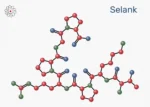ARA-290 Peptide and Neuropathic Pain in Diabetes
Neuropathic pain, seen as a common manifestation in diabetes, may be associated with uncontrolled high sugar levels causing damage to the nerves, thus interfering with their ability to send signals. ARA-290 peptide is speculated to work to reduce pain and enhance the functioning of nerve fibers damaged due to small fiber neuropathy. Researchers suggest that its mechanism involves the activation of the β-common-receptor, a player in non-hematopoietic effects mediated by Erythropoietin. The activated β-common-receptor, when combined with the EPO receptor, forms a heterocomplex known as the Innate Repair Receptor (IRR). This activation of IRR, purportedly an anti-inflammatory mediator, may inhibit the death signal, preventing damage to nervous tissues. In animal models, ARA-290 exposure was reported associated with significant changes in blood glucose concentrations. Researchers suggest a potential reduction in HbA1c levels without affecting hepatic insulin sensitivity. This speculative improvement might be linked to enhanced β-cell metabolism, improved [Ca2+] handling, and glucose-induced insulin release.
Non-Hematopoietic Erythropoietin–Mediated Effects
ARA-290, considered an Erythropoietin (EPO) analog, may exhibit cytoprotective and anti-inflammatory characteristics, potentially without the hematopoietic effects associated with EPO, as speculated from experimental studies.
Inflammation and Kidneys
Animal model research studies suggest that ARA-290 may potentially improve kidney function by reducing interstitial fibrosis and cytokine expression. This speculative improvement might be related to an anti-inflammatory process involving eNOS phosphorylation.
ARA-290 Peptide and Injured Nerve Tissue
ARA-290, through the speculated upregulation of IRR, may activate anti-inflammatory responses and promote healing in damaged neurons, potentially reducing pain, as reportedly observed in mice suffering from mechanical and cold allodynia.
ARA-290 Peptide and Hypoxia-induced Cellular Damage
In limb ischemia, researchers propose that ARA-290, akin to Erythropoietin, may protect against hypoxia-induced cellular damage. Research studies using animal models suggest that ARA-290 exposure may have potentially reduced inflammatory cytokine concentrations in the models.
Disclaimer: The products mentioned are not intended for human or animal consumption. Research chemicals are intended solely for laboratory experimentation and/or in-vitro testing. Bodily introduction of any sort is strictly prohibited by law. All purchases are limited to licensed researchers and/or qualified professionals. All information shared in this article is for educational purposes only.






